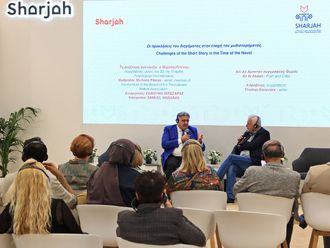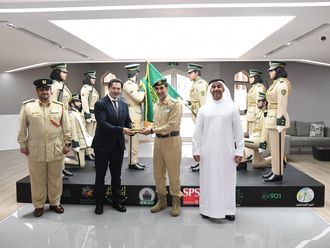The outrageous massacre that recently took place in Ishnam Asheri mosque in Quetta, Baluchistan Province, Pakistan, against the Shia minority, resulting in the death of 47 people, is part of a growing sectarian struggle that has shown its ugly face since General Zia-ul-Haq's era in the 1980s.
Before then, conflicts in Pakistan had been of an ethno-centric nature, involving the different ethnic groups in the country (Punjabis, Sindhis, Pakhtuns, Baluchis and Mohajirs - Muslims who came from India). Sectarian conflicts were neither clearly defined nor bloody at that time.
The founding fathers of Pakistan believed that the creation of an independent entity based on religion would ensure the steadfastness and continuity of the nation. They held that the principles of fraternity, co-operation and unity among followers of Islam, regardless of their ethnic origins, would be adequate to form a single national identity. However, this was soon discovered to be a fallacy.
Nationalism prevailed over religious feelings within Pakistan's Bengalis, leading to a demand for an independent homeland in East Pakistan. With the Bengalis' success in achieving their aspirations in 1971, many Pakistanis believed there would be a reduction in ethnic violence and more national cohesiveness.
In fact, Pakistan's politicians and generals, to mitigate their people's shock at Pakistan's defeat in the 1971 Bangladesh War, promoted such an idea. They also said the secession of East Pakistan would strengthen the country's security vis-à-vis India, with its army focusing on one rather than two fronts.
However, the event did not resolve the country's ethnic problems and the lessons of Bangladesh's creation were not learnt. Centralisation policies of regimes, the perceived persistence of political, economic, social, and cultural disparities, all have radicalised ethnic sentiments and regionalism among Baluchis, Sindhis, Pakhtuns, and Mohajirs.
A further complication was the emergence of an aggressive sense of reverse discrimination among the Punjabi ethnic group which makes up 60 per cent of Pakistan's population.
The Pakhtuns have cherished a dream of creating an independent state in co-operation with their ethnic brothers in Afghanistan since 1947. To establish a national homeland for themselves, Baluchi tribesmen rebelled against the government in the early 1970s.
The rebellion was put down by the military intervention of the Shah of Iran who was concerned about it spreading to his own restive Baluchi population.
Meanwhile the province of Sind became a stage for ethnic conflicts between Sindhis and Mohajirs and other ethnic groups. The Sindhis claimed discrimination in government jobs, education and resources by Punjabis, and about Mohajirs' takeover of their land and domination of their major cities (such as Karachi and Hyderabad).
Unsurprisingly, Sindhi frustrations led to the emergence of numerous small, regional, and ethnic-based groups in Sind in the 1980s, such as Jiye Sind and the Sind National Alliance. As a reaction, Mohajirs formed their own party, the MQM, to oppose indigenous Sindhi movements and stand against other ethnic groups.
Ethnic strife
The government had to admit to the existence of ethnic strife in Pakistan. However, it attributed this to political and economic factors rather than to nationalist ambitions. Under the disguise of preserving Pakistan's security and national unity, the government dealt with ethno-nationalist problems through repressive means (as was the case in Baluchistan at the hands of Zulfikar Ali Bhutto and in Sind by his successor Zia-ul-Haq) instead of resolving such problems through dialogue.
Had successive federal governments responded to some demands of the Sindhis, Baluchis and Pakhtuns by curbing the domination of Punjabis over the country's resources and army, or provided them with access to political power and economic and cultural resources, the severity of the struggles could have been mitigated.
Then there was the Afghan issue with its serious repercussions that fuelled ethnic divisions and grievances. Ethnic strife in Sind and other provinces has been exacerbated by the proliferation of weapons from the Afghan war. This resulted, by the late 1980s, in transforming Karachi - Pakistan's largest urban and industrial centre - into a stage for extraordinary civil violence.
More serious was the interaction of ethnic problems with sectarian strife between Pakistan's Sunni and Shiah communities. Until the early 1980s, their relationship was characterised by caution and mutual doubt arising from historical and ideological differences, as was the case in many other Islamic countries.
The Afghan war was responsible for changing the balance between Shiah and Sunni Pakhtun tribes of the mountainous areas due to the influx of Afghan Sunnis. The Iranian revolution's triumph brought hope for Pakistan's Shiah minority (about 20 per cent of the total population, including Ismailis, followers of the Agha Khan).
Perhaps if it was not for Zia-ul-Haq's dictatorial and hasty domestic policies, there would have been no ground for Sunni-Shiah clashes. Zia, to legitimise his regime, announced a plan to Islamise society, which worsened sectarian rifts.
His attempts to impose a Sunni interpretation of Islamic law alienated the Shiah community. His imposition of compulsory zakat collection and introduction of a uniform Islamic code led in 1983 to massive Shiah demonstrations and riots in Karachi, Punjab, and Baluchistan.
All these fuelled Sunni attacks on Shiahs. Some Sunni religious scholars demanded that Pakistan be declared a Sunni state and public performances of Shiah rituals be restricted. As a result, sectarian tensions exacerbated, leading both Sunnis and Shiahs to transform their religious organisations into political parties or para-military movements.
Among these were the Tehrik-i-Nifaz-i- Fiqh Jafaria, a Shiah party set up in 1987, and the Sunni radical group, Sipah-e-Sahaba, which emerged in the 1990s, denouncing Shiahs as infidels. It is accused of genocide against Shiahs.
In 1988, hard-line Sunni groups assassinated the prominent Shiah scholar Arif Hussain Al Hussaini in Peshawar. This resulted in a Shiah uprising with street protesters shouting "an eye for an eye and blood for blood", accusing Zia-ul-Haq of complicity in the crime. In my opinion, this was the spark that unleashed Pakistan's Sunni-Shiah strife.
The recent massacre in Quetta has proved once again that the authorities are unable to tame sectarian violence and Pakistan has become a dangerous place even for prayers. The incident has dealt a severe blow to General Pervez Musharraf's efforts to improve Pakistan's image and his plans to consolidate law and order before taking off his military uniform.
The writer is a Bahrain-based Gulf researcher and writer on Asian affairs. He can be contacted at aelmadani@gulfnews.com
Abdullah Al Madani: Massacre in Quetta's Ishnam Asheri mosque
The outrageous massacre that recently took place in Ishnam Asheri mosque in Quetta, Baluchistan Province, Pakistan, against the Shia minority, resulting in the death of 47 people, is part of a growing sectarian struggle that has shown its ugly face since General Zia-ul-Haq's era in the 1980s.











